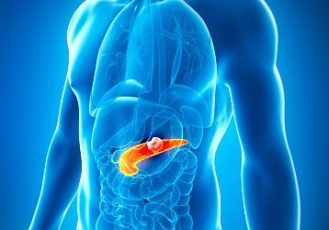
Second-line treatment with S-1 regimen plus liposomal irinotecan (nal-IRI) did not improve progression-free survival (PFS) compared with nal-IRI plus 5-fluorouracil/leucovorin (5-FU/LV) in metastatic pancreatic cancer after first-line gemcitabine-based chemotherapy, according to data presented at the European Society for Medical Oncology Congress 2024.
In an international, multicenter, open-label, 1:1 randomized phase 1-2 trial, patients (n=120) aged 18 years or older with pancreatic adenocarcinoma previously treated with gemcitabine-based chemotherapy were randomly assigned to the S-1 arm or the 5-FU arm.
In phase 1 (n=20), the maximum tolerated dose (MTD) and dose-limiting toxicity (DLT) for nal-IRI plus S-1 were determined.
In phase 2, participants received S-1 25 mg/m2 orally twice daily for 14 days, followed by two weeks rest, and nal-IRI 70 mg/m2 intravenous (IV) on days one and 15 every four weeks (n=61) versus nal-IRI 70 mg/m2 followed by LV 400 mg/m2 and 5-FU 2400 mg/m2 IV over 46-hours every two weeks (n=59), until disease progression.
To detect a hazard ratio (HR) of 0.415 with two-sided α=0.05 and 80% power, 120 patients were needed. HR and 95% CI were estimated using a stratified Cox model.
The primary endpoint was PFS, which was a median of 3.5 months for S-1 and 3.7 months for 5-FU (HR, 1.265; 95% CI, 0.838-1.910; P=.26).
Secondary endpoints included overall survival (median 6.0 months for S-1 vs 9.1 months for 5-FU [HR, 1.468; 95% CI, 0.993-2.171; P=.054]) and serious adverse event rate (39% for S-1 vs 19% for 5-FU [P=.029]).
“Second-line treatment with nal-IRI plus S-1 did not improve PFS…OS tended to improve with nal-IRI plus 5-FU/LV,” the researchers wrote.







 © 2025 Mashup Media, LLC, a Formedics Property. All Rights Reserved.
© 2025 Mashup Media, LLC, a Formedics Property. All Rights Reserved.